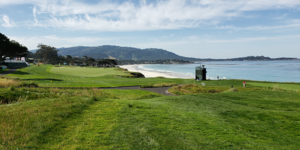Using heat vision to aid water-use predictions

Thermal, or infrared, camera systems being developed to measure water status in turf have the potential to become an essential tool for precision turfgrass management. As these systems become more accessible, models need to be created to provide clear management decisions. The goal of this study is to create a thermal-imagery assisted algorithm that measures real-time water use in a creeping bentgrass green.
The study area is monitored by a Turf-Vu Hawkeye FLIR (forward-looking infrared) camera system. Thermal and visual images are recorded from the creeping bentgrass research green every 10 minutes. Irrigation treatments include 0-percent, 50-percent and 100-percent water replacement determined by a weighing lysimeter and an experimental stress-index threshold. Water replacement is measured daily by weighing a 9-inch diameter lysimeter embedded in each plot. The lysimeters are 16 inches in depth, and the soil construction matches the USGA profile of the surrounding turf. Each plot is irrigated by hand with a flow meter attached to a nozzle.
The lysimeters allow us to measure daily water use, including water lost to leaching and through evapotranspiration (ET). We are correlating actual water use with estimated water use from an on-site weather station. The difference between the actual and estimated is reflected in the crop coefficient (Kc). While early, we are finding Kc greater than 1 in the 100-percent daily replacement treatment, while the non-irrigated plots have Kc less than 0.7. These plots also are hotter. Over the coming winter we will develop models to relate the increase in canopy temperature with measured water use and crop coefficient.
Joe Foral and Bill Kreuser, Ph.D., University of Nebraska-Lincoln. For more information, you may reach Foral at jforal@unomaha.edu.
Photo: Joe Foral









